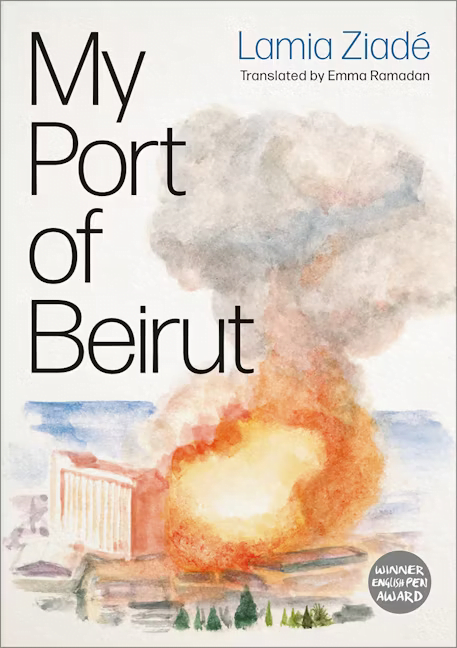Today, Paris and other French urban zones see the demonstrations of the gilets jaunes, organised in part through new media. Considering Paris’ lineage of street politics, it seems an interesting moment to reflect on the achievements of the Paris Commune as established in March 1871, and to address the role media plays in both reporting and distorting such events.
Of all the myths surrounding the Paris Commune of 1871 as propagated by the writers and illustrators of the conservative presses through the 1870s, perhaps the most striking and complex image created remains that of the pétroleuses. The popular rumour from the period had it that, as the Commune faced defeat at the hands of the French Third Republic, a deranged orgy of arson was being perpetuated by a malevolent class of Parisian women conspiring against the infrastructure of their own city. In Unruly Women of Paris, 1996, Gay L Gullickson surveys the scene and the behaviour of the press, observing that ‘Virtually overnight, this representation of the dangerous, unruly female incendiary came to symbolise the evil of the Commune for its critics’, adding, ‘For conservatives, the fires and the sinister pétroleuse were a godsend, since they distracted attention from the army’s slaughter of the Parisians’ (159). In the public more broadly, for Gullickson, ‘bourgeois men and woman were obsessed with representations of the women on the barricades as immoral and unnatural’ (176). Well after the Commune was defeated, spite towards the pétroleuses remained, and they would prove a useful scapegoat for the French state to blame. Indeed, for states well beyond France: diplomat Elihu Washburne, for example, would take outraged tales of savage pétroleuses home with him to the US. Yet what is most alarming regarding the myth of the pétroleuses, it is apparent, is that there is no evidence anywhere to suggest that such a gang ever actually existed.
If the pétroleuses were just an urban myth, then why were their supposed activities depicted and denounced so widely in the French and international presses? Was it a reactionary statement regards traditional gender roles, or does the caricaturing of the female Communarde reveal the reaction’s wider ideological programme? For Gullickson, ‘the Commune texts give us a clearer picture of their writers’ ideologies than they do of their ostensible subject matter’ (226). Indeed, the presses’ cartoons of the pétroleuses say very little about the real actions of Paris’ working class women, but reveal much about the paranoias of the 1870s bourgeois. In reality, whilst embattled Paris was literally burning, so too were the Communes’ revolutionary ideas – for all the different voices and factions within the Commune, each shared in the successful establishment of the Commune’s autonomy, and its rejection of the old forces of order. The reactionary presses’ faux concerns towards the burning streets of the war torn city, then, masked their real concern: dousing the ideologies underpinning revolution.
Eugène Girard’s 1871 lithograph, La Femme, émancipée, répandant la lumière sur le monde [The Emancipated Woman, Spreading Light in the World] exemplifies the propagandistic role played by reactionary media of the period. In the image, lunging towards the viewer from foreboding smoke, a female figure brandishes a freely flowing can of petrol and flaming torch – it is the dreaded pétroleuse, of course. Sans subtlety, her face is lurid; a scruff of hair and sunken eyes suggest her rabid and dangerous. Yet with his punchline, captioned on the image – The Emancipated Woman, Spreading Light in the World – Girard does not make a simple accusation of mania or violence. Rather, in irony his image supposes the wider cause of that derangement: emancipatory ideals themselves. ‘In certain discourses,’ writes Gullickson, ‘the pétroleuse came to represent not just the dangerous, uncontrolled woman but a world turned thoroughly upside down’ (12). In Girard’s image – embodying reactionary sentiment – the pétroleuse has indeed been deployed as ‘a powerful personification of evil with which to condemn the Commune and to question the very nature of women’ (159-160).

In Gullickson’s analysis, ‘Feminists, who were called emancipated women in the nineteenth century, were women who had left the domestic sphere for the political arena’, where, ‘feminism challenged bourgeois men’s sense of order, power, and well being’ (225). It is in such certain discourses as Girard’s, then, that the scorn manufactured towards the pétroleuses becomes microcosmic to the scorn directed towards revolutionary movements and their ideologies wholesale. If, then, with the pétroleuse, Girard has portrayed a fantasy, he has revealed also the reality of bourgeois morality and its opposition to social change – bourgeois values need not only fear revolution itself, but equally the self emancipated female anticipating it. In Surmounting the Barricades, 2004, Carolyn J Eichner assesses the centrality of female activity in the Commune, noting, ‘Fired by working women’s action, the insurrection developed as a ripe environment for the emergence and elaboration of multiple feminist socialisms’ (1). Asserting a necessary convergence between class and gender struggles for the social revolution, Eichner observes, ‘Feminist socialists shared the belief that they stood on the threshold of a new society, a world ushered in by the Commune and awaiting the sculpting hand of a successful revolution’ (6). If for the Commune and its feminist socialists, gender and class struggles were each indivisible from the other, so too, it seems, were they indivisible in the minds of the reaction where the myth of the pétroleuse would reflect at once the fear of both class and gender struggle. In the caricaturing of the pétroleuse, we can locate simultaneously the fear of the emancipated individual and, equally, that of working class collectivity – a duality of threat to bourgeois cultural and political order. The message of the pétroleuse myth, then, is one perpetuating the ideology of the state, where enforcement of the conventional role of women in the home equates to the wider consolidation of conventional conceptions and arrangements of state power. For bourgeois order, the phantom pétroleuse is most ghoulish in her complete inversion of their values – the revolutionary woman not only leaves the home, she burns it down.
In her memoirs of 1886, Communarde Louise Michel describes her revolutionary mindset; it is ‘All or nothing’ (The Red Virgin, 191). With her own use of irony, Michel revels in the very same emancipated and revolutionary spirit that the enemy has condemned; ‘Barbarian that I am,’ she writes, ‘I love cannon, the smell of powder, machine-gun bullets in the air’ (66). In contrast to Girard’s state endorsed propaganda, real photographs of Michel, such as 1871’s Louise Michel en costume de fédéré [Louise Michel in Fédéré Uniform], present the level-headed, no-nonsense actuality of female Communarde militancy. Considering the all or nothing advancements of the Commune’s social programme, the extremity of violence in the state suppression of it can be seen to parallel the magnitude of the state’s fear. Not simply a fear of the Commune’s bullets in the air, but fear of its emancipatory ideas in action: ‘Art for all! Science for all! Bread for all!’ (Michel, 30) Yet state violence is only ever one aspect of the suppression of ideology. The reaction would continue to work to negate the sympathetic mythology that might surround the Commune long after its destruction physically. In the enforcement of the state’s cultural hegemony the reactionary media plays a psychological role, the denial of social consciousness. ‘In the provinces people believed the stories Versailles spread about the Commune’, wrote Michel, ‘After all, statecraft requires a government to create discord among the common people’ (65). Girard and his pétroleuse certainly play their part in the creation of this discord. In the programme of statecraft, the reactionary press maintains a propagandising position, the enforcement of state power on cultural terrain.
Nevertheless, the Commune’s achievements persist, they survive the destruction of its barricades and its councils. For Marx, the Commune ‘will be forever celebrated as the glorious harbinger of a new society’ (The Civil War in France, 1871, 63). For Bakunin, ‘I am a supporter of the Paris Commune, which, for all the bloodletting it suffered at the hands of monarchical and clerical reaction, has nonetheless grown more enduring and more powerful in the hearts and minds of Europe’s proletariat’ (The Paris Commune and the Idea of the State, 1871, 78). As for Girard and the pétroleuses, they remain totemic of the myths and manipulations employed in the hegemonic enactment of power. Where the Commune effected ‘a bold, clearly formulated negation of the State’ (Bakunin, 78), the State serving myth of the pétroleuse sought to negate the legacy of the Commune, to defuse its ideas and achievements through distortion. This is the hidden reality of intention in the presses’ perpetuation of the reactionary myth. Encoded within the image of the pétroleuse itself is a wider, far reaching ideology; one which, as Marx describes it, ‘looks complacently upon the wholesale massacre after the battle, is convulsed by horror at the desecration of brick and mortar’ (56). If the ultimate defeat of the Commune would be contingent on the destruction of its ideas, then the final victory of 1871, then as now, would be to those who would win the collective consciousness. In our own time – a volatile online world of fake news, digital disinformation and corporatised media – the cultural battle continues.
Joe J Robinson
Bibliography/works cited:
- Bakunin, Mikhail. The Paris Commune and the Idea of the State, in Writings on The Paris Commune, p75-89. Florida: Red and Black Publishers, 2008.
- Eichner, Carolyn J. Surmounting the Barricades: Women in the Paris Commune. Indiana: Indiana University Press, 2004.
- Girard, Eugène. La femme, émancipée, répandant la lumière sur le monde, lithograph, 1871. Musée Carnavalet, Paris.
- Gramsci, Antonio. Prison Notebooks. London: Lawrence and Wishart, 2005.
- Gullickson, Gay L. Unruly Women of Paris: Images of the Commune. New York: Cornell University Press, 1996.
- Louise Michel en costume de fédéré, photograph, 1871. Musée de l’Histoire Vivante, Montreuil.
- Marx, Karl. The Civil War in France. New York: International Publishers, 1933.
- Merriman, John. Massacre: The Life and Death of the Paris Commune of 1871. Connecticut: Yale University Press, 2014.
- Michel, Louise. The Red Virgin: Memoirs of Louise Michel. Alabama: University of Alabama Press, 1981.
Featured image: Louise Michel en costume de fédéré








